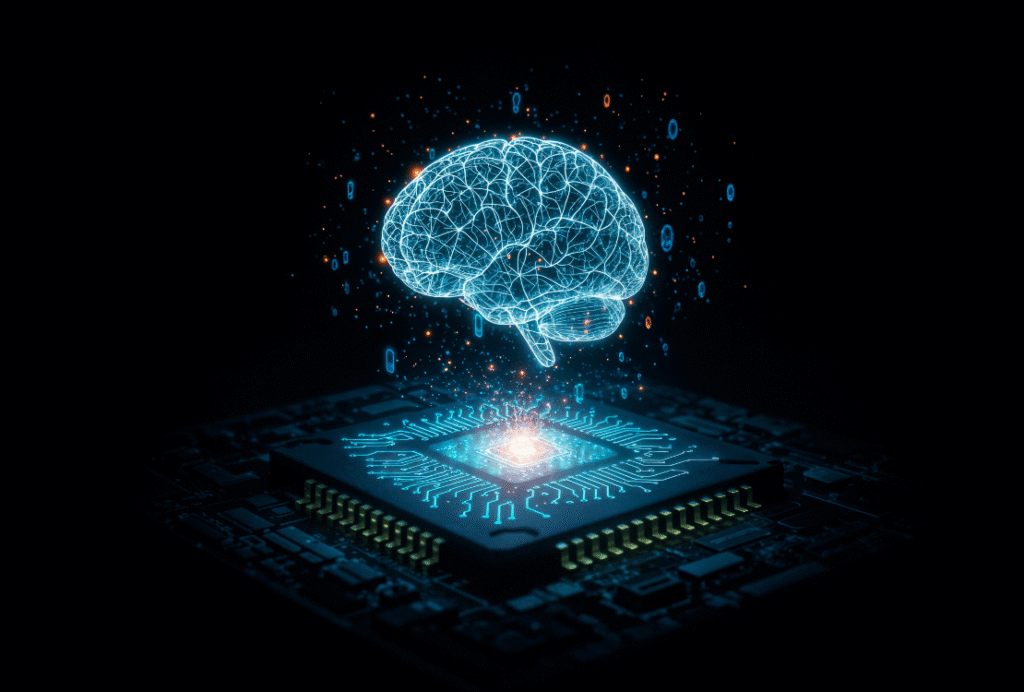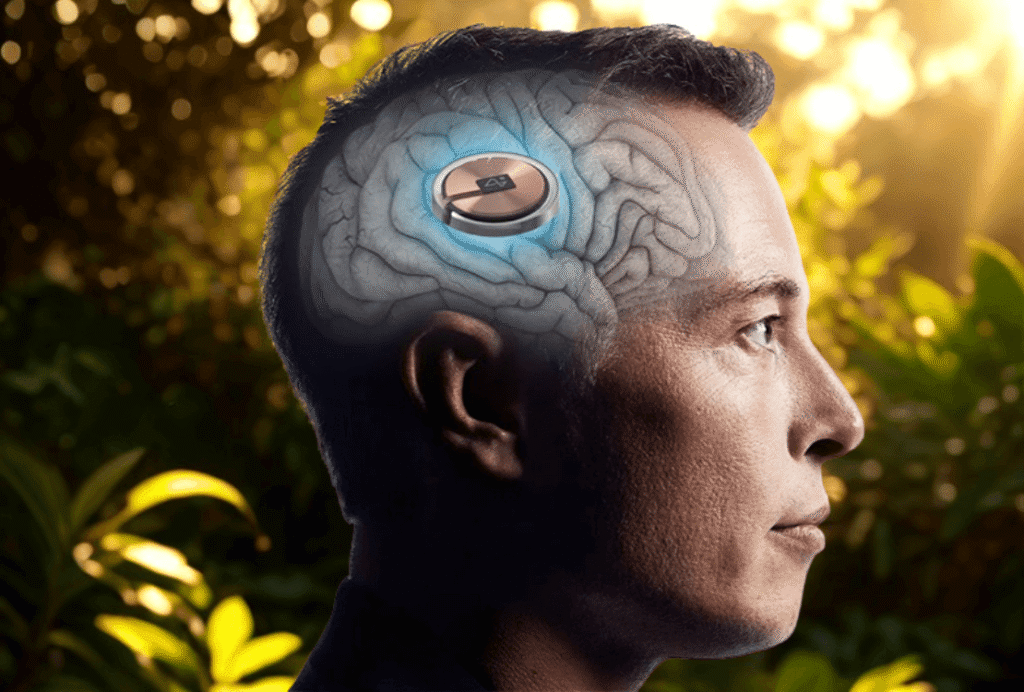Introduction:
With the speed at which technology advances in the current world, we are getting acquainted with innovations almost daily. Some of these innovations make our lives easier, while others force us to think about the future differently. Elon Musk’s company, Neuralink, is working on one such groundbreaking technology. In particular, there is a lot of curiosity about “Neuralink Stock” in the investment world.
There is a lot of discussion around the world about this technology that establishes a direct connection between the brain and the computer. Many are excited about the possibilities of this technology, while many have various questions and doubts.
What is Neuralink, and why is it so important?

Neuralink is a neurotechnology company founded in 2016 by Elon Musk and a group of scientists and engineers. Its main goal is to create a brain-computer interface (BCI) directly connecting the human brain to a computer. In simple terms, it is a technology that can convert our thoughts into digital commands.
Initially, Neuralink aims to help patients suffering from various neurological diseases. This technology can open up new horizons in solving problems such as paralysis, blindness, deafness, dementia, and Parkinson’s disease. People who cannot move their limbs due to accidents can control computers or prosthetic limbs just by thinking.
But Elon Musk’s dream does not end there. He aims to merge human intelligence with artificial intelligence (AI). According to Musk, AI can surpass human intelligence in the future and threaten mankind’s existence. Through Neuralink, humans can keep up with AI and increase their capabilities often.
How does Neuralink’s technology work?
Neuralink’s technology is based on a small, coin-sized chip called ‘Link.’ This chip contains more than a thousand ‘threads’ or fibers that are finer than human hair and is equipped with numerous electrodes. These threads are placed close to the neurons in the brain.
The process is completed in several steps:
- Surgery: A specialized surgical robot, which can work much more precisely than a human hand, places these threads in specific brain parts. This process is very complex and delicate. The robot is designed to place the threads while avoiding blood vessels, which reduces the risk of brain damage.
- Signal recording: Neurons in the brain generate electrical signals, or ‘spikes,’ to communicate with each other. Electrodes on the Neuralink thread detect these signals.
- Data processing: The ‘Link’ chip processes these signals in real-time and sends them to an external device (such as a computer or smartphone) via Bluetooth.
- Command execution: The external device analyzes these signals to understand the user’s intent and acts accordingly. For example, suppose the user wants to move the computer’s cursor to the right. In that case, the chip will recognize the specific signal that their brain produces and give the computer that command.
Neuralink’s first human test: The beginning of a new chapter

In January 2024, Neuralink achieved a historic milestone by implanting its chip in a human brain for the first time. The first human participant was 29-year-old Noland Arbaugh, who was completely paralyzed from the shoulders down in an accident almost eight years ago.
After Noland had the ‘Link’ chip implanted in his brain, he could control a computer cursor just by thinking about it. He started playing his favorite video games, such as chess and ‘Civilization.’ It was an incredible experience for him, giving him back his freedom in the digital world. “It’s like using the Force from Star Wars,” Noland said in an interview.
But the path wasn’t entirely smooth. A few weeks after the surgery, some threads came loose, slowing down data transfer. However, Neuralink engineers fixed the problem with a software update and restored Noland’s abilities. The incident highlights the technology’s early challenges and its ability to solve them.
“Neuralink Stock”: The Reality of Investing
With all the talk about the technology and its potential, the question that gets asked the most is, “Can I buy Neuralink stock?”
The simple and straightforward answer is no. Ordinary investors are not currently able to buy Neuralink stock.
Neuralink is a privately held company not listed on any public stock exchange (such as the New York Stock Exchange or NASDAQ). Only a few investors, such as venture capital firms and angel investors, can invest in it by negotiating directly with the company.
Why is Neuralink still private?
There are several reasons for this:
- Long-term goals: Neuralink’s technology is still in its early stages and will take many more years to achieve its ultimate success. Becoming a public company means shareholder pressure for quarterly results, which can hinder long-term research.
- Regulatory approval: Since it is a highly sensitive medical device, its widespread use requires stringent approval from regulatory agencies such as the Food and Drug Administration (FDA). This process is time-consuming and uncertain.
- Source of funding: Neuralink has already raised over a billion dollars from Elon Musk himself and major investment firms such as Google Ventures and Founders Fund. Therefore, they have not yet had the urgent need to raise funds from the public market.
Will Neuralink go public in the future?

Probably, yes. When Neuralink’s technology matures, its commercial applications begin, and the company moves towards profitability, it may enter the public market through an Initial Public Offering (IPO). However, it is difficult to say precisely when this will happen. It could take another few years or even a decade.
Alternative investment avenues:
Some alternative avenues exist for those interested in investing in the neurotechnology sector. Several small, publicly traded companies work on brain-computer interfaces or related technologies. However, it is essential to do thorough research before investing in them.
Who are Neuralink’s competitors?
Neuralink is not the only player in this space. Several companies are working on brain-computer interface technology, the most notable of which is Synchron.
Synchron’s technology is slightly different from Neuralink’s. Instead of drilling directly into the brain, it delivers a stent-like device through a blood vessel to the motor cortex. This procedure is considered less risky and has already been successfully applied to several patients.
The main difference between Synchron and Neuralink is in their approach. Neuralink is working on a higher-bandwidth connection that will allow it to perform more complex tasks, but it requires more invasive surgery. Synchron, on the other hand, emphasizes a safer and simpler approach.
Moral and Philosophical Questions
As Neuralink’s technology has brought immense potential, it has raised some serious moral and philosophical questions.
- Security and Privacy: Could our brains be hacked if they are directly connected to the internet? Could hackers read our thoughts? Or, more frighteningly, could they change our thoughts or memories? Who will own our brain data?
- Social Inequality: If this technology is only available to the wealthy, could it create a new kind of ‘biological’ inequality between the rich and the poor? Will those who have this technology be far ahead in intelligence and power?
- Identity and Humanity: Will we lose our human identity by enhancing brain power? Will the ability to download or upload memories change our personality? What is the difference between a human and a machine?
- Accountability: Who will be responsible if a robotic arm controlled by Neuralink makes a mistake? The user, or the company?
Finding answers to these questions is no less important than the technical challenges. Creating a strong ethical framework for using this technology is essential for the future of humanity.
The path to the future: from medical treatment to human enhancement
Neuralink’s journey is divided into two main phases:
1. Short-term goal:
Medical: The first and most important goal is to improve the quality of life of people with neurological diseases. Neuralink will revolutionize the treatment of paralysis, blindness, deafness, stroke, and other brain diseases. At this stage, it will act as an assistive technology.
2. Long-term goal:
Human Enhancement: The second and more ambitious goal is to enhance the abilities of healthy people. This could include:
- Telepathic communication: communicating with others directly through thought.
- Augmented memory: storing one’s memories in the cloud and accessing them as needed.
- Rapid learning: acquiring new skills by downloading information directly into the brain.
- Symbiosis with AI: Creating a higher collective intelligence by merging with artificial intelligence.
This second phase is the most controversial, with immense social and philosophical implications.
Some Frequently Asked Questions (FAQs)
Question 1: Is Neuralink stock a good investment?
Answer: Since Neuralink stock is not yet available on the public market, it is not time to say whether it is a good investment. Regarding IPO, it will have to be evaluated based on its financial condition, technology maturity, and market competition.
Question 2: Is Neuralink technology safe?
Answer: Like any new medical technology, Neuralink also has risks. Brain surgery is always risky. However, the company is working to minimize these risks by using a specialized robot and following strict regulatory guidelines. While the results of the first human trials are promising, much more research is needed to ensure long-term safety.
Question 3: Will Neuralink be able to control our minds?
Answer: Currently, Neuralink’s technology is designed only to ‘read’ brain signals, not to ‘write’ them. That is, it can control the device with your thoughts, but it cannot insert new thoughts into your brain. However, future versions have the potential to add the ability to ‘write,’ which raises serious ethical questions.
Question 4: When will this technology be available to the general public?
Answer: Its use for medical purposes could begin on a limited scale in the next few years. However, its widespread use to enhance the abilities of healthy people could still take a decade or more.
Conclusion
Neuralink is not just a technology company; it is a vision for the future of human civilization. It could cure our diseases, overcome limitations, and even redefine what it means to be human. It is natural to be curious about “Neuralink stock,” but its significance goes much deeper than investment.
While this technology could create unimaginable opportunities for humanity, its misuse could also bring terrible dangers. Therefore, it is our responsibility as scientists, policymakers, and ordinary people to closely monitor the development of this technology and ensure that it is used for the benefit of humanity.
Neuralink’s journey has just begun, and only the coming days will tell whether it will usher in a new golden age in human history or a utopian dream that could turn into a nightmare.

Hi, I’m M Saif, a digital marketer with a strong focus on SEO and content writing. I help businesses improve their online visibility, drive organic traffic, and create engaging content that converts. With a results-driven approach, I work on strategies that not only boost rankings but also deliver real value to audiences.












Leave a Reply